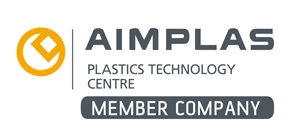Large Format Digital Printing: Technology to Improve Finishing Productivity
Large format digital printing is undergoing far-reaching organizational, production and product changes. All this implies a positive stance towards technology in order to optimize performance in the different production phases to increase business quotas. Thus, today we find in different international fairs such as SGIA, FESPA, ISA International Sign Expo, Salón C! Print, among others, companies that commit themselves to innovation, research and development of new machinery or procedures in the field of large format digital printing.
The customization of services is one of the most increasing demands in the field of digital printing as it has the flexibility to produce short runs at low costs. However, some departments within a workshop have not been able to get on the technology train or, specifically, their capacity for innovation is slower compared to pre-print or printing departments.

Here, we will reflect on the main trends in the sector and the new technologies applied to finishes in large-format digital printing.
Technologies that shape the future of large format digital printing
One of the main aspects of the trend in large format digital printing technology will be the automation of processes in all phases of the production process. Next, we will look in detail at the four main technological aspects that different studies and professionals in the sector point to as a trend.
Unsupervised operations and labor saving
We can find many areas that are starting to become automated, but many printers still need direct operator supervision. They constantly check the quality of the print or ensure that there are no problems with different parts of the printed material. If there is no control, workshops can suffer an increase of expenses, generate unnecessary fatigue to the work staff and dissatisfaction of the customers due to delays in the job.

As a result of this problem, it will be more common to find sophisticated technology that allows printheads to be configured to maintain quality throughout the job without compromising the operator's workday.
Fast response times
According to Sal Sheikh, vice president of Large Format Marketing Solutions at Canon Solutions America, PSP (Print Service Provider) companies must have faster equipment that can deliver the optimal quality at the first time, resulting in labor saving and process automation.
The 2017 study "Looking for BIG Opportunity in Graphic Communications & Specialty Printing" noted that 61% of PSP customers want large-format jobs to be delivered in less than 24 hours. This marks a trend towards automated workflows that speed up work processes.
Customization and print cuts within short periods of time
With regard to the previous point, the demand is calling for the jobs to be be executed in short times, and also the printers, machines and mobility devices need to be designed so as to change quickly from one job to another. For example, the change of rolls between one job and another is often a problem within the workshops so it will be necessary to have the right equipment to move around large rolls without any problem.
In this case, PLASTGrommet has the Quick Lifter, an easy to use machine that enables media rolls to be loaded from a rack or the floor with a few movements, allowing for faster jobs with less unexpected events.
Integrated finishing productivity
As we have seen before, automation is one of the keys to the technology of the future and the finishing department does not escape that. From digital cutters and cutting tables to eyelet machines, we are looking for an integral automation of all the productive processes of this department.

It is clear that technology for finishes has become a trend. According to a specialized study, the equipment for finishing and the bookbinding machines will be the first investment priority of many companies.
At PLASTGrommet, we have a good understanding of the technologies demanded by the large format printing market, which is why we have an R&D department focused on finding the best digital printing finishing solutions from basic devices to automated systems. We develop from machines for setting eyelets with touch screens to fully automatic systems that are able to perform different finishes with the utmost security and the least effort of the operator.

Latest news







 Carretera Font Roja 23 03801 Alcoy (Alicante) SPAIN
Carretera Font Roja 23 03801 Alcoy (Alicante) SPAIN Youtube channel
Youtube channel LinkedIn
LinkedIn

